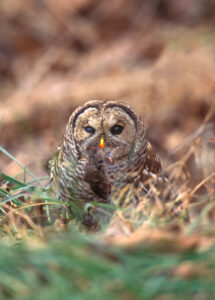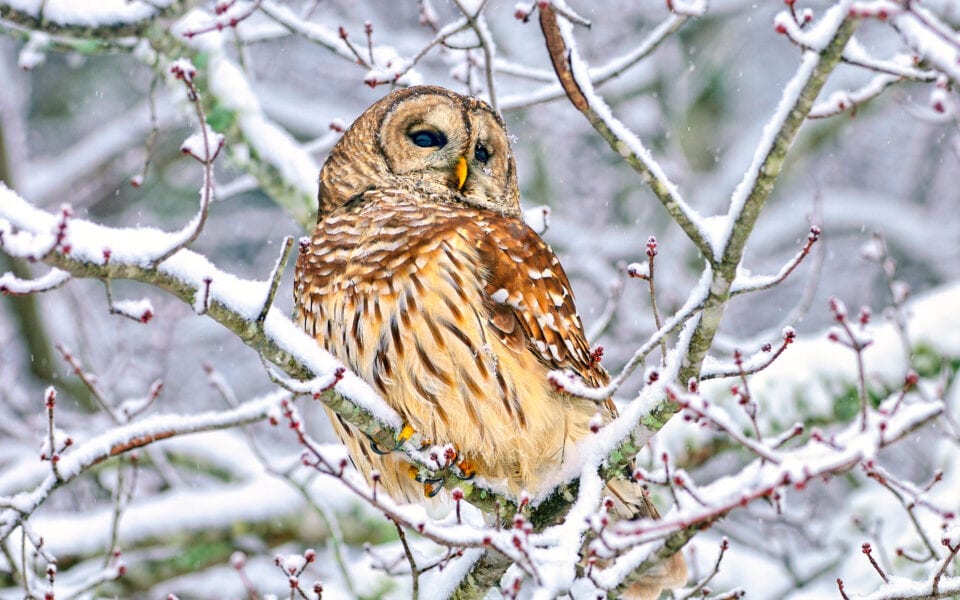Species Profile: Barred Owl, Fast Facts, Trivia, & Management Tips:

Savvy turkey hunters know that gobblers often reveal their location, especially when roosted, in response to a barred owl’s eight note call. When teaching someone to make this call, the phrase “Who cooks for you, who cooks for y’all” is often used, This sound, sometimes used as background noise in horror movies, is possibly nature’s most reliable turkey locater, The barred owl, (Strix varia), is best known as the “hoot owl.” Other names include eight hooter, rain owl, wood owl and striped owl.
The barred owl is non-migratory and historically inhabited the woodlands east of the Great Plains. Barred owls and other species of birds have expanded their range over the past century to include the northern plains and west to Washington, Oregon and northern California due to increased tree planting and fire suppression. It’s the only common owl in the United States that has brown eyes. All others have yellow eyes. Lacking ear tufts, the barred owl’s rounded head and medium sized, chunky body make it unlikely to be confused with other owls. It has a pale face, yellow beak and dark rings encircling the eyes. The upper body is mottled gray/brown. Their under-parts are light with darker markings. The chest is barred horizontally while the belly is streaked vertically (hence the name “barred owl”).
Barred owl populations are numerous, expanding and its conservation status is at “Least Concern. It tends to inhabit older forests and generally requires large, dead trees with suitable cavities for nest sites. Abandoned nests built by other animals such as hawks, ravens, squirrels and crows may be utilized. These needs make them sensitive to logging expansion. They’re often used as an indicator species for managing old forests.
Did You Know the Barred Owl…

- The barred owl like the wild turkey, dates back to the Pleistocene Age, at least 11,000 years ago. Fossils have been dug up in Florida, Tennessee and Ontario.
- The barred owl owlets, prior to fledging, climb trees by gripping the bark with their talons and bill, flapping their wings and walking up the trunk.
- The barred owl hunts primarily at dusk and nighttime for a wide variety of small animals, swooping down from a perch or gliding through the forest to capture voles, chipmunks, squirrels, mice, rabbits and birds (up to the size of a grouse). It sometimes hunts during the day and occasionally wades into water to hunt turtles, fish, crayfish and frogs. Prey may be stored temporarily in a nest, on a snag or wedged in a branch.
- The barred owl is sometimes preyed upon by its enemy, the Great Horned Owl, which eats its eggs, young and occasionally adults.
- The barred owl is often seen being mobbed by crows, woodpeckers and small songbirds who recognize it as a predator.
- The barred owl has a life span up to ten years in the wild. One owl was known to live to 23 years old in captivity.
Join our weekly newsletter or subscribe to GameKeepers Magazine.
Your source for information, equipment, know-how, deals, and discounts to help you get the most from every hard-earned moment in the field.









